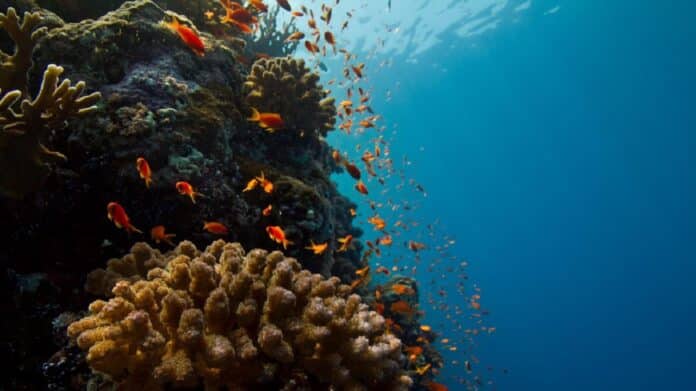According to EPFL research, marine fungi may also help safeguard coral reefs from climate change.
Tropical coral reefs play an important role in the diversity of marine ecosystems. They assist in avoiding coastal erosion and are home to a variety of microorganisms whose complicated relationships have long fascinated scientists.
The symbiotic relationship between corals and algae was the first to be examined because the tiny algae are simple to observe under a microscope.
Claudia Pogoreutz, a marine biologist who conducted postdoc research at the Laboratory for Biological Geochemistry within EPFL’s School of Architecture, Civil and Environmental Engineering (ENAC), said, “The products of algae photosynthesis provide corals with much of the sugars they need for growth, thus promoting the formation of coral reefs. But other types of microorganisms – like bacteria, viruses, and fungi – may be just as important and could also play a significant role in the health and resilience of coral reefs.”
Pogoreutz now focuses her research on marine fungi, the functional characteristics of which are still unknown. Her recent study in FEMS Microbiology Reviews was one of the first to present a synthesis of their significant potential, and it won the journal’s 2022 Best Article Award.
Scientists have long disregarded marine fungi because it is difficult to characterize their populations and isolate individual species. However, because of developments in sequencing and other analytical approaches, researchers are constantly making strides to investigate these microbes in more depth. Much of this research has thus far concentrated on the function of fungus in marine illness.
Although previous research has focused on their function in marine disease, Pogoreutz’s studies suggest that the connections between fungi and corals may be diverse, extend beyond disease formation, and be surprisingly complex.
Some marine fungi can break down dead bacteria or other cells in the coral and convert them into nutrients for the coral and algae.
The researcher derived many of her research theories from studies of biological processes in terrestrial fungi, which have garnered far greater attention in the scientific literature.
For example, numerous terrestrial fungi infect dead and decaying trees and other plant matter, decomposing wood and other substances using a vast range of enzymes. Marine fungi have also been discovered to infect stressed coral. Importantly, trees and most other plants can also host helpful fungus species, which aid the host tree in obtaining nutrients from its surroundings.
While no beneficial interactions of fungi with their hosts have yet been established on the coral reef, symbiotic fungi may be vital for coral health. Some marine fungi may aid in coral health by generating antibiotic chemicals to ward off diseases. They may also play an important role in exchanging and recycling nutrients with coral and algae.
He said, “For example, we believe that some marine fungi can decompose dead bacteria or other cells in the coral and turn them into nutrients for the coral and algae.”
The rapid rate of global warming is causing coral reefs to become increasingly unstable. That is why studying the beneficial properties of marine microbes, especially fungi, is critical, as it offers new avenues for restoring the health of stressed corals.
This research could lead to the development of novel medications or have industrial implications, similar to how bacteria research led to the production of probiotics.
Claudia Pogoreutz said, “We believe that some marine fungi can decompose dead bacteria or other cells present in the coral and turn them into nutrients for the coral and algae.”
The LGB at EPFL is equipped with a nanoscale secondary ion mass spectrometry ion probe (NanoSIMS) for studying coral reefs and their symbiotic connection with microorganisms.
LGB scientist Nils Rädecker said, “This cutting-edge instrument allows us to observe symbiotic relationships at unprecedented resolution because we can identify individual cells and subcellular structures.”
Rädecker and his colleagues will better understand the interactions between marine animal-microbe symbioses using the NanoSIMS.
Journal Reference:
- Roik, A., Reverter, M., & Pogoreutz, etal. A roadmap to understanding diversity and function of coral reef-associated fungi. FEMS Microbiology Reviews. DOI: 10.1093/femsre/fuac028
